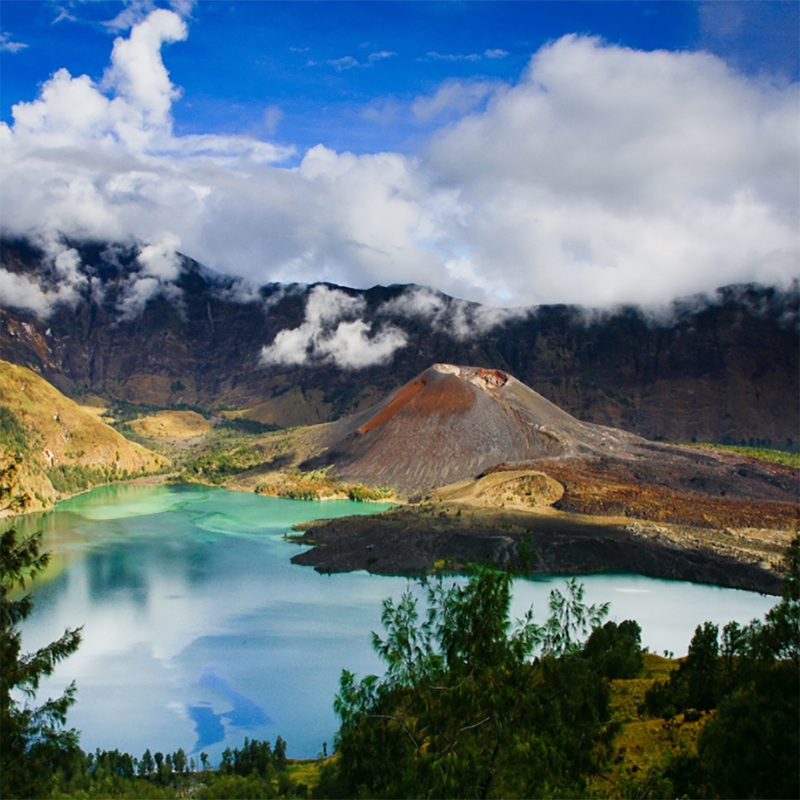At 3,726 metres above sea level, striking Gunung Rinjani is Indonesia’s second highest volcano, after Kerinci in Sumatra, and the 15th highest peak in the country. From all aspects it dominates Lombok’s landscape, and from the summit you can see east to Gunung Agung on Bali and Gunung Tambora on Sumbawa. The ascent, a popular activity for both foreign and domestic travellers, is nothing less than gruelling.
The site of a catastrophic eruption in 1257, the original twin peaks of Gunung Samaras were thought to have reached around 4,200 metres in height. The eruption is seen as the main cause of a “mini ice age” at the time (much as neighbouring Tambora was in the 19th century).
After the eruption, the cone is believed to have collapsed into the caldera (also as with Tambora) forming the gorgeous Segara Anak lake with the new “baby volcano” Gunung Barujari bubbling away within. Barujari remains active to this day with at least four eruptions or explosions since 2000, but even when it isn’t erupting, if forms a splendid view, both from the crater rim and, within the caldera, from the lakeside. The entire peak is now called Rinjani, not Samaras.
Climbing Rinjani, either to the crater rim or the actual summit, is one of the most popular activities on Lombok proper, but as with the climb of Gunung Agung on Bali, the fact that every man and his dog will happily book you onto a climbing package shouldn’t be taken as a suggestion that the climb is easy. It isn’t.
Treks are run from two access points: Senaru to the north of the peak and Sembalun Lawang, to the east. They come in three main flavours: a one-night, summit-only trek, a two-night summit and lake trip, and a three-night summit and lake trek. There are pros and cons to each approach and none of the routes are “easy”. As our guide Padila said, “You need to feel some pain to get something good.”
The most popular approach is from Sembalun Lawang, meaning if you book in Senaru you may be shuttled there by minibus before you start walking. As we started in Sembalun Lawang, we’ll start from there, but if you’re planning on starting in Senaru, just read all this backwards.
One-night package
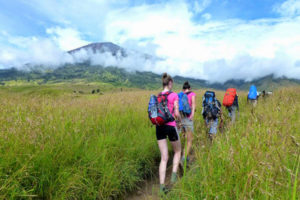 Leave Sembalun Lawang (1,156m) early in the morning, climb via Pos 1 (1,300m), Pos 2 (1,500m) and Pos 3 (1,800m) to Plawangan 2 (eastern crater rim 2,639m) where you camp for the night. You then begin the ascent to the summit around 02:00, aiming for the summit (3,726m) for dawn.
Leave Sembalun Lawang (1,156m) early in the morning, climb via Pos 1 (1,300m), Pos 2 (1,500m) and Pos 3 (1,800m) to Plawangan 2 (eastern crater rim 2,639m) where you camp for the night. You then begin the ascent to the summit around 02:00, aiming for the summit (3,726m) for dawn.
You then walk all the way out to Sembalun Lawang that same day, though some will camp again on the way out, making this a two-night trek at a more relaxed pace.
Two-night package
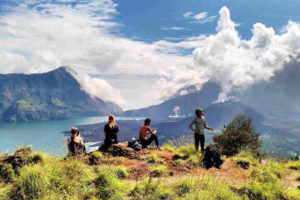 Leave Sembalun Lawang (1,156m) early in the morning, climb via Pos 1 (1,300m), Pos 2 (1,500m), Pos 3 (1,800m) to Plawangan 2 (eastern crater rim 2,639m) where you camp for the night. You then begin the ascent to the summit around 02:00, aiming for the summit (3,726m) for dawn.
Leave Sembalun Lawang (1,156m) early in the morning, climb via Pos 1 (1,300m), Pos 2 (1,500m), Pos 3 (1,800m) to Plawangan 2 (eastern crater rim 2,639m) where you camp for the night. You then begin the ascent to the summit around 02:00, aiming for the summit (3,726m) for dawn.
You then return to Plawangan 2, pack up and hike into the crater to camp beside the lake (2,008m) where you can also visit some hot springs. On the third day you leave the lake early, climbing the northern crater rim at Plawangan 1 (2,641m) before a long downhill hike through Pos 3 (2,000m), Pos 2 (1,500m) and Pos 1 before reaching Senaru at around 600m.
Three-night package
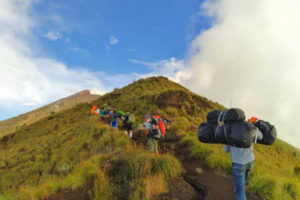 This is essentially the same as the two-night package, but you camp a second night either at the lake side (essentially allowing a day off) or at the northern crater rim, leaving just the hike down to Senaru from the crater rim on the final day.
This is essentially the same as the two-night package, but you camp a second night either at the lake side (essentially allowing a day off) or at the northern crater rim, leaving just the hike down to Senaru from the crater rim on the final day.
There are a few variations on this, depending on you and the weather.
Longer packages
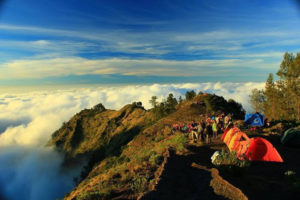 For those with more time (and money) there are a variety of other options you can cobble together.
For those with more time (and money) there are a variety of other options you can cobble together.
Have fun and be safe!
